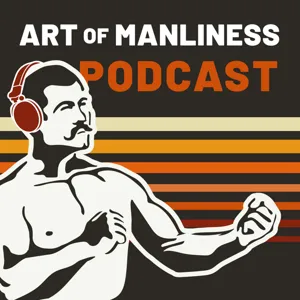Podcast Summary
Ancient Polynesian Wayfinding: Ancient Polynesians navigated the Pacific using senses, natural signs, and ancestral knowledge, showcasing their incredible skills and resilience. Despite suppression during colonization, efforts are being made to rediscover and share this ancient wisdom.
Ancient Polynesian navigators, like Lihua Kamalu, relied on their senses, natural signs, and ancestral knowledge to navigate across the vast Pacific Ocean without modern instruments or maps. Wayfinding, as Lihua describes, is the ability to immerse oneself in the natural world and use all available resources to find one's way. This method, which has been used for over a thousand years, showcases the incredible skills and resilience of our ancestors. Unfortunately, during the US annexation of Hawaii and subsequent colonization, the wayfinding knowledge of native Polynesians was suppressed. Today, Lihua and her crew are on a mission to rediscover and share this ancient wisdom through their voyages on the Hokulea, a traditional Polynesian voyaging canoe.
Revival of Polynesian Voyaging in Hawaii: The Hokulea, a replica Polynesian voyaging canoe, was built in the 1970s to demonstrate ancient navigational skills and spark a cultural renaissance in Hawaii. A master navigator from Micronesia led the successful voyage to Tahiti, inspiring pride and connection to Pacific heritage.
The revival of Polynesian voyaging in the 1970s was a significant part of a cultural renaissance in Hawaii, aimed at preserving and teaching native language, music, and traditions to younger generations. The building of the Hokulea, a replica Polynesian voyaging canoe, was a mission to demonstrate the intentionality and navigational skills of early Polynesians, who had been discredited by earlier theories suggesting accidental drifting or westward voyages from South America. At the time, there were no living Hawaiians with wayfinding knowledge, so a master navigator from Micronesia, Mau Pialug, was brought in to guide the canoe to Tahiti using ancient methods. The successful voyage marked a time of renewed pride and connection to the rich history of Polynesia, and served as a reminder of the incredible achievements of Pacific ancestors. For Lihua Kamalu, a native Hawaiian born in New York, the Hokulea represented a tangible link to her heritage, and a source of inspiration and education for future generations.
Transformative Experience Sailing on Hokulea: Joining the Polynesian Voyaging Society and sailing on the traditional Hawaiian canoe Hokulea taught Lehua the value of perseverance and connection to cultural traditions.
Being part of the Polynesian Voyaging Society and sailing on traditional Hawaiian canoes like Hokulea was a transformative experience for Lehua. Growing up, she was inspired by these vessels, which were right in her backyard. After studying mechanical engineering in college and joining the Polynesian Voyaging Society, she found herself learning the ins and outs of sailing and engineering. This passion was amplified by the societal impact of these voyages on Hawaii and its community. Imagine sailing on Hokulea, a double-hulled canoe that is 62 feet long and has no traditional sleeping quarters. Instead, you sleep on the hulls themselves, exposed to the elements. Sailing on Hokulea requires enduring discomfort, as every task involves being in an uncomfortable position or holding on to prevent being knocked down by waves. The experience of sailing on Hokulea is akin to staying outside for an extended period, with little protection from the sun, rain, and waves. Despite the challenges, the transformative experience of being part of this voyage and connecting with the rich Polynesian sailing traditions made a lasting impact on Lehua.
Polynesian Navigators Relying on Celestial Navigation, Ocean, and Birds: Ancient Polynesians navigated the ocean using stars, ocean patterns, and birds. Birds were crucial for guiding sailors closer to land, but it was essential to know which birds to follow.
Ancient Polynesian navigators relied heavily on celestial navigation, the ocean, and birds to guide them during their voyages. They needed to have a strong understanding of the stars and their movements, as well as the ocean's patterns and waves, to navigate the vast ocean without modern technology. Birds, particularly those that lived on land, were also essential in guiding navigators closer to land. However, it was important to know which birds to follow and which to avoid, as some birds might not return to land for years. The navigator's job was to pay close attention to these natural indicators and compare them to find consistency and changes. Even though folklore depicts women as navigators, Polynesian voyaging was traditionally passed down from grandfathers to grandsons.
Embracing challenges leads to growth: Fear and reluctance towards new experiences can lead to unexpected opportunities and personal growth. Embrace challenges and push beyond comfort zones to gain valuable experiences and achieve goals.
Facing challenges and stepping out of comfort zones can lead to unexpected opportunities and growth. The speaker, who initially expressed fear and reluctance towards navigating rough ocean conditions, ended up taking on the role of captain during a historic voyage. The journey was filled with both beautiful moments, like clear skies and dolphin sightings, and difficult ones, like navigating through low wind areas. Despite the initial apprehension, the speaker embraced the challenge and gained valuable experience along the way. Additionally, the Polynesian Voyaging Society's first voyage to the West Coast marked a significant milestone in their exploration, demonstrating the importance of perseverance and innovation in achieving goals.
Sailing the Pacific: Adapting to Challenges and Embracing Cultural Differences: The Pacific Ocean voyage tested the team's perseverance, teamwork, and adaptability to unpredictable weather and cultural differences, ultimately leading to a successful journey and inspiring future generations.
Sailing across the Pacific Ocean is a challenging and unpredictable journey. The sailors must constantly adapt to changing weather conditions and navigate through storms, which can be both physically and emotionally taxing. Despite the hardships, the team remained focused on their goal and worked together to ensure a safe and successful voyage. The experience taught them valuable lessons about perseverance, teamwork, and the importance of adapting to the environment. The sailors also encountered moments of joy and celebration upon reaching their destination, where they were welcomed with open arms by local communities. These cultural exchanges were an important part of the journey and highlighted the interconnectedness of the world. Additionally, the sailors recognized the significance of their achievement as the first all-female crew to complete the voyage, inspiring future generations of sailors and breaking down gender barriers in the maritime industry.
Voyages of Hawaiian canoes to Tahiti: These voyages highlight the importance of unity, heritage, and environmental stewardship among Pacific communities, perpetuating traditional practices and fostering conversations about shared responsibility for Pacific Ocean health and sustainability.
The voyages of the canoes Kelei Kahiki from Hawaii to Tahiti, like the one taken by Lahua and her crew in 2022, serve as powerful reminders of the importance of unity, heritage, and environmental stewardship among Pacific communities. These voyages not only perpetuate traditional practices but also facilitate conversations about the shared responsibility to ensure the health of the Pacific Ocean and the sustainability of economies, agriculture, fisheries, and tourism in Pacific islands. The recognition of the interconnectedness of Pacific communities was evident during the arrival in Tahiti, where there were ceremonies honoring the long-standing relationships between the islands and their people. Lahua's upcoming circumnavigation of the Pacific, called Moananiakea, further emphasizes the significance of this unity and the importance of caring for the ocean as one shared home.
A voyage of exploration, education, and inspiration: The Polynesian Voyaging Society's journey on the Hokulea sailing canoe aims to educate 10,000,000 navigators, combining exploration, self-discovery, and traditional wayfinding values.
The Polynesian Voyaging Society's journey on the Hokulea sailing canoe is not just about exploration and discovery across the Pacific Ocean, but also about education and inspiring the next generation of navigators. We started this voyage in Alaska, where we received trees from Southeast Alaska to build the canoe Hawaii Loa, marking the beginning of a special relationship between Hawaii and Alaska. The goal is to educate 10,000,000 navigators, not only in traditional wayfinding but also in applying the values and priorities of these voyages to their own lives and communities. This voyage is a celebration of navigators and a pathway for people to find their way into navigation, with synergy and overlap between exploration and self-discovery. For more information, visit hokulea.com or read about the 2022 journey to Tahiti in National Geographic.
The Power of Authentic Storytelling in Journalism: Authentic storytelling is crucial in journalism for resonating with audiences, despite the advancements in technology. Meaningful, connected, and engaging stories that prioritize truth and accuracy will continue to captivate readers and viewers.
Nathan Lomp, the editor in chief of National Geographic, shared insights about the power of storytelling and the importance of authenticity in journalism during this podcast episode. He emphasized that stories should be meaningful, connected, and engaging to resonate with audiences. Lomp also highlighted the role of technology in expanding the reach and impact of storytelling, but warned against sacrificing authenticity for the sake of production value. Overall, the conversation underscored the significance of authentic storytelling in a rapidly changing media landscape.






